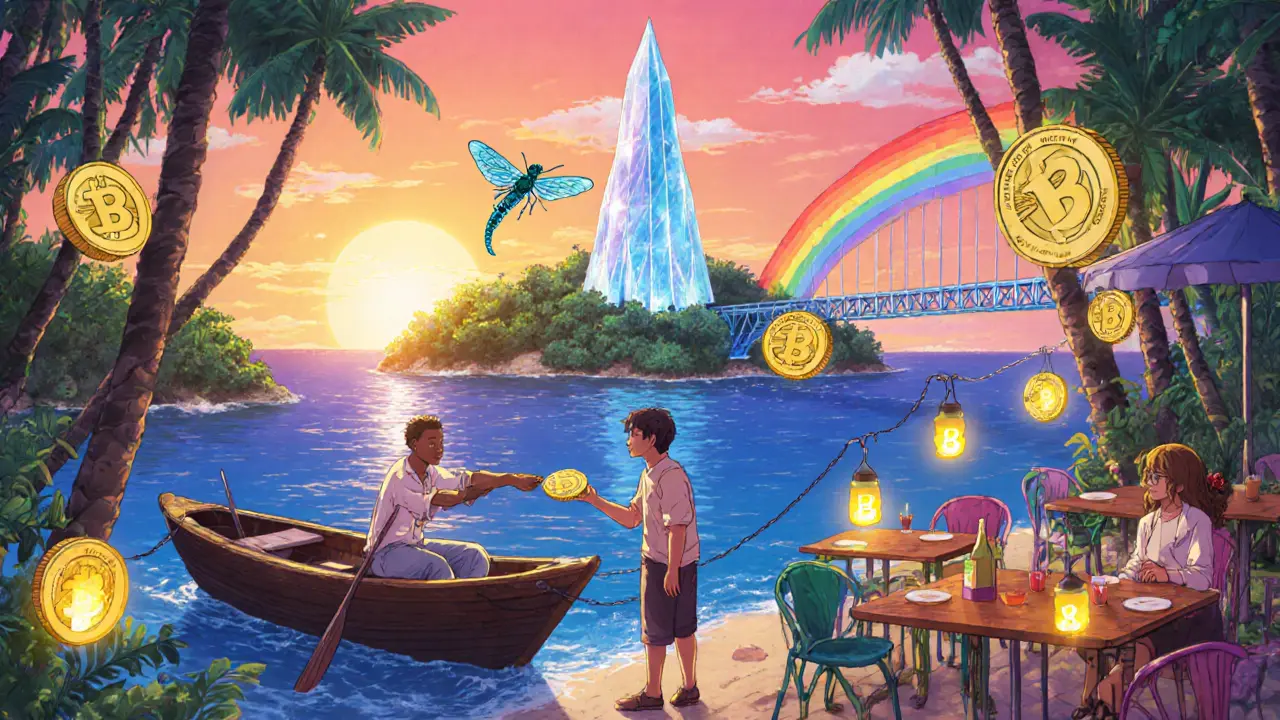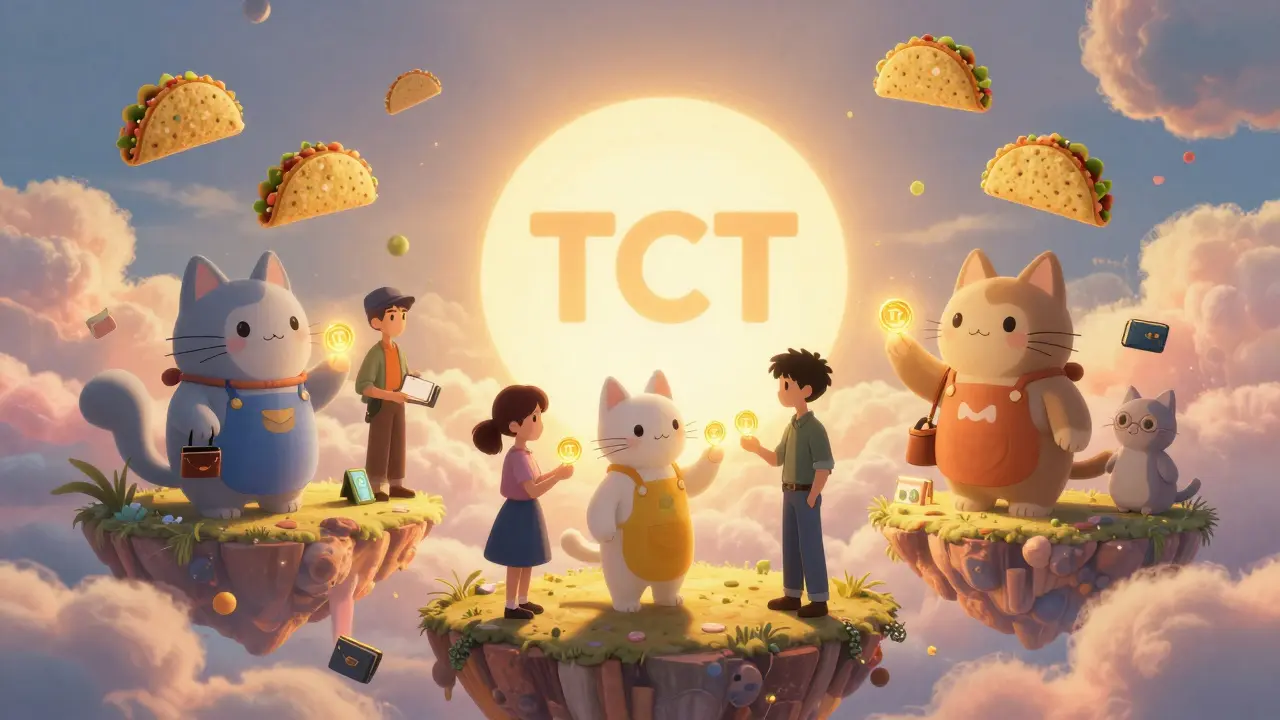USDD Collateralization Calculator
USDD requires 120-200% over-collateralization. For every $1 of USDD minted, at least $1.20 worth of crypto assets is locked as collateral. Currently, USDD maintains 170-200% collateralization.
Current collateralization: 170-200% (over $1.4 billion in crypto backing $725 million USDD)
Backed by: TRX (42%), BTC (25%), USDT (14%)
Collateral Required
USDD requires over-collateralization to maintain stability. Higher ratios provide more security against market volatility. Current USDD has 170-200% collateralization based on public reserves.
USDD is a decentralized stablecoin designed to maintain a 1:1 peg with the U.S. dollar, but unlike USDT or USDC, it doesn’t rely on banks or centralized reserves. Instead, it’s backed by a mix of cryptocurrencies like Bitcoin (BTC), TRON (TRX), and even USDT itself - all held in smart contracts managed by the TRON DAO Reserve. Launched on May 5, 2022, USDD was originally built as an algorithmic stablecoin, similar to Terra’s UST. But after UST collapsed in May 2022, USDD completely changed its model. It now requires at least 120% collateral backing, and in practice, it’s often over 170%. That means for every $1 of USDD in circulation, there’s at least $1.20 worth of crypto assets locked up to back it.
How USDD Stays Pegged to the Dollar
USDD doesn’t just sit idle. It uses three key tools to keep its value steady at $1:
- Mint-and-burn system: If USDD drops below $1, users can burn $1 worth of TRX to get 1 USDD. If it rises above $1, users can burn 1 USDD to get $1 worth of TRX. This creates automatic supply control.
- Peg Stability Module (PSM): This lets you swap USDD for USDT or USDC at a 1:1 rate with almost no slippage. It’s like a direct exchange inside the system, keeping prices stable even during market swings.
- Linked Exchange Rate System (LERS): Unlike rigid stablecoins that force a perfect $1 peg, LERS allows small, controlled fluctuations - say, between $0.99 and $1.01 - to absorb market pressure without triggering panic.
These tools work together to avoid the kind of collapse that killed UST. The system doesn’t rely on magic algorithms - it relies on real crypto assets locked up as collateral. And unlike centralized stablecoins, there’s no single company controlling the money. Everything runs on open-source smart contracts.
Where USDD Works: 11 Blockchains
One of USDD’s biggest strengths is how many blockchains it supports. It started on TRON, Ethereum, and BNB Chain in 2022. Since then, it’s expanded to 11 networks: Avalanche, Fantom, Polygon, Arbitrum, Aptos, Aurora, Optimism, Sui, and more. This means you can use USDD across DeFi apps on almost any major chain.
For example, if you’re trading on Arbitrum and need a stablecoin with low fees, you can bridge your USDD over from TRON. The transfers use bridges like Stargate Finance and Symbiosis, which are trusted by thousands of users. This multi-chain access makes USDD a favorite for cross-chain traders and liquidity providers who don’t want to be stuck on one network.
Who Backs USDD? The Collateral Breakdown
USDD isn’t backed by dollars in a bank. It’s backed by crypto. According to public reports from the TRON DAO Reserve, the collateral mix looks like this:
- ~$848 million in TRX (TRON’s native token)
- ~$372 million in BTC (Bitcoin)
- ~$200 million in USDT
That’s over $1.4 billion in assets backing roughly $725 million in USDD in circulation - a collateral ratio of about 190%. That’s higher than DAI’s 150% minimum. The TRON DAO Reserve publishes weekly reports on GitHub and their official site, showing exactly what’s in the vault. Anyone can verify it.
This transparency is rare. Most centralized stablecoins don’t reveal their reserve details in real time. USDD does. And audits from firms like CertiK have confirmed these numbers are accurate.
USDD vs. Other Stablecoins: What Sets It Apart
Let’s compare USDD to the big players:
| Feature | USDD | USDT | USDC | DAI |
|---|---|---|---|---|
| Backing | Crypto (TRX, BTC, USDT) | Fiat + reserves | Fiat + reserves | Crypto (ETH, WBTC, etc.) |
| Collateral Ratio | 120%-200% | Not fully disclosed | Not fully disclosed | 150% minimum |
| Decentralized? | Yes | No | No | Yes |
| Supported Chains | 11 | 15+ | 10+ | Mainly Ethereum |
| Regulatory Status | Banned in US/EU | Widely accepted | Widely accepted | Accepted in most regions |
| Market Cap (Nov 2023) | $725M | $103.4B | $34.2B | $5.1B |
USDD wins on decentralization and transparency. It loses on adoption and regulatory acceptance. If you care about censorship resistance and open verification, USDD is one of the few options. If you want maximum safety and wide merchant support, USDT or USDC are safer bets.

USDD Is Legal Tender in the Commonwealth of Dominica
In October 2022, the Commonwealth of Dominica - a small Caribbean island nation - made USDD legal tender. That means businesses there can legally accept it as payment for goods and services, just like the U.S. dollar.
It’s the first time a sovereign nation has given legal status to a decentralized crypto stablecoin. That’s huge. It’s not just a gimmick. Some resorts, restaurants, and local shops in Dominica now take USDD. Government services? Not yet. But the move signals that decentralized money can gain official recognition.
It also shows that USDD isn’t just for traders. It’s being tested as real money in the real world.
Who Can Use USDD? (And Who Can’t)
Here’s the catch: you can’t use USDD if you live in the United States or the European Union. Due to strict regulations around stablecoins - like the EU’s MiCA law and pending U.S. legislation - USDD blocks users from these regions. That’s a big limitation. It’s why USDD’s market cap is tiny compared to USDT and USDC.
But users in Asia, Latin America, Africa, and non-EU Europe use it heavily. Over 42% of USDD holders are in Asia. Many use it to send money across borders cheaply, avoiding high remittance fees. For people in countries with unstable local currencies, USDD offers a way to store value without relying on banks.
How to Get Started with USDD
Getting USDD isn’t hard - if you’re not in a restricted region. Here’s how:
- Get a Web3 wallet like TronLink, MetaMask, or Trust Wallet.
- Deposit collateral: TRX, BTC, or USDT.
- Go to the official USDD platform and connect your wallet.
- Mint USDD by locking your collateral. For every $1 worth of collateral, you get 1 USDD.
- Use it on any of the 11 supported chains.
You can also burn USDD to get your collateral back. The process is automated, fast, and cheap - especially on TRON, where fees are under $0.05 per transaction.
Beginners might find this confusing. TRON Academy estimates it takes 3-5 hours to learn the basics. But once you get it, it’s smooth. The official guide is 47 pages long - detailed, but clear.

Pros and Cons of USDD
Pros
- Decentralized and transparent - no company controls it.
- High collateralization - over 170% in practice.
- Works on 11 blockchains - great for DeFi and cross-chain use.
- Legal tender in Dominica - real-world adoption.
- Low transaction fees on TRON.
Cons
- Banned in the U.S. and EU - limits growth.
- Backed by volatile crypto - if TRX crashes 30%, the peg could be tested.
- Small market cap - only 0.5% of the total stablecoin market.
- Limited merchant use outside Dominica.
What Experts Say About USDD
Opinions are split. Some see USDD as a bold experiment in decentralized finance. Others warn it’s still too risky.
Crypto economist Alex Krüger argues that even with 170% collateral, a sharp drop in TRX could trigger a run on USDD. If TRX loses 30% of its value, the collateral backing might not be enough to cover all USDD - especially if people panic and rush to redeem.
On the other hand, auditors like CertiK have verified the collateral reports. And the fact that USDD switched to over-collateralization after UST’s collapse shows it learned from mistakes.
Delphi Digital gives USDD a 78% chance of surviving the next five years - mainly because the TRON DAO Reserve has strong backing and clear rules. But they also say: “Regulation is the biggest threat.”
What’s Next for USDD?
USDD isn’t standing still. In November 2023, it added support for the Sui blockchain, bringing total chains to 11. The roadmap includes:
- Integration with five more Layer-1 blockchains by mid-2024
- A fiat on-ramp partnership to help users buy USDD with bank transfers (bypassing geo-blocks)
- A dynamic collateral system that adjusts ratios based on market volatility
If USDD can solve the regulatory problem - maybe by partnering with licensed financial firms - it could grow quickly. Right now, it’s a niche player. But in a world where more countries might adopt crypto as legal tender, USDD could be ahead of the curve.
Is USDD safe to use?
USDD is as safe as its collateral. With over 170% backing in crypto assets and weekly public audits, it’s more transparent than most stablecoins. But because it’s backed by volatile assets like TRX and BTC, its value can be affected by market swings. If those assets crash hard, the peg could temporarily break. It’s safer than algorithmic stablecoins like UST, but not as stable as USDT or USDC, which are backed by cash.
Can I buy USDD on Coinbase or Binance?
No. USDD is not listed on major centralized exchanges like Coinbase or Binance due to regulatory restrictions. You can only get it through decentralized platforms like JustLiquidity, TRON DAO Reserve’s official site, or via bridges from other chains. You’ll need a Web3 wallet and some TRX, BTC, or USDT to mint it.
Why is USDD banned in the U.S. and EU?
The U.S. and EU are moving toward strict rules for stablecoins, requiring them to be backed 1:1 by cash or cash equivalents. USDD is backed by crypto, not dollars, and is governed by a decentralized group, not a regulated company. That makes it non-compliant with current regulations like the EU’s MiCA law. Until it changes its model or partners with licensed entities, access remains blocked.
How does USDD compare to DAI?
Both are decentralized, over-collateralized stablecoins. DAI is mostly backed by Ethereum-based assets and runs primarily on Ethereum. USDD uses a wider mix of assets (TRX, BTC, USDT) and works on 11 blockchains. USDD has higher collateral ratios (170-200% vs. DAI’s 150%) but less adoption. DAI is used more in DeFi on Ethereum, while USDD is popular for cross-chain transfers and in regions outside the U.S. and EU.
Can USDD replace the U.S. dollar?
No - not now, and not soon. USDD is a crypto asset, not a currency. It’s pegged to the dollar, not meant to replace it. Its legal tender status in Dominica is symbolic and limited to a few businesses. It’s a tool for decentralized finance and cross-border payments, not a national currency replacement. The U.S. dollar remains the dominant global reserve currency.
Final Thoughts
USDD is not for everyone. If you want the safest, most widely accepted stablecoin, stick with USDT or USDC. But if you care about decentralization, transparency, and multi-chain freedom - and you’re outside the U.S. and EU - USDD is one of the most interesting options out there. It’s not perfect. It’s not big. But it’s trying to build something different: a stablecoin that answers to no government, no bank, and no CEO. Only code. And in a world where financial control is increasingly centralized, that’s worth paying attention to.







Roshan Varghese
November 18, 2025 AT 22:40Leisa Mason
November 20, 2025 AT 16:08Rob Sutherland
November 22, 2025 AT 01:56Jennifer Corley
November 23, 2025 AT 17:38Frank Verhelst
November 24, 2025 AT 03:50andrew casey
November 26, 2025 AT 02:36Melina Lane
November 26, 2025 AT 03:12Dexter Guarujá
November 27, 2025 AT 11:29Tim Lynch
November 29, 2025 AT 01:29Lani Manalansan
November 30, 2025 AT 11:44